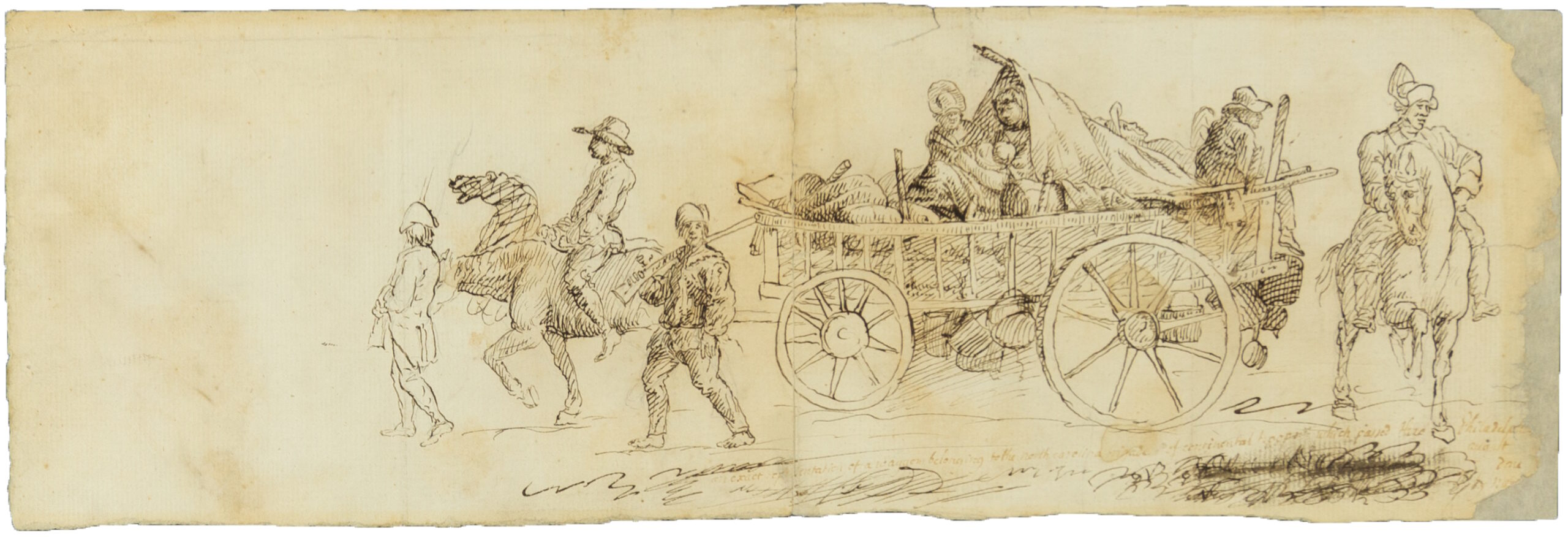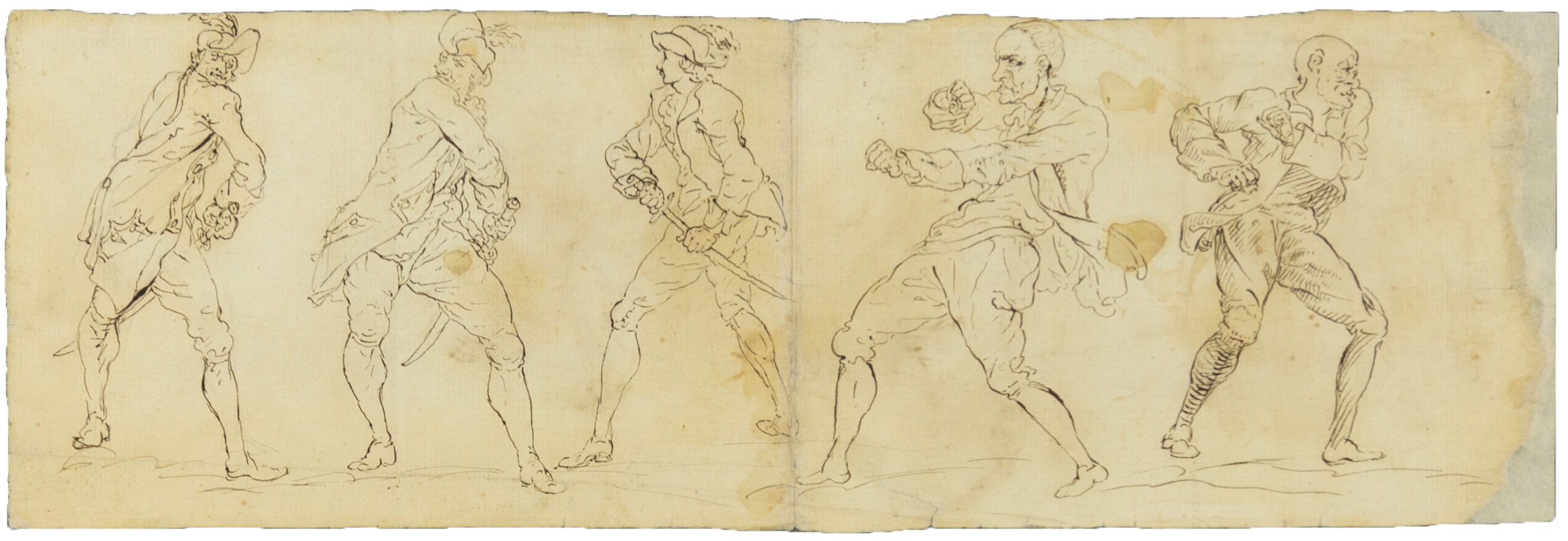A previously unknown and unpublished sketch depicting soldiers and camp followers marching through Philadelphia in 1777, has been donated to the Museum of the American Revolution. The soldiers were troops from the North Carolina Brigade, and this pen-and-ink drawing is the first depiction of them known. It is the second known eye-witness drawing of camp followers.
The sketch captures the North Carolina Brigade going through Philly on August 25, 1777, on their way to join the Continental Army before the Battle of Brandywine (September 11, 1777). Two soldiers walk in front of a large open wagon. The wagon driver is on horseback between them and an officer on horseback takes up the rear. The wagon carries two women, one holding a baby.
The inclusion of female camp followers – who shared life on campaign with enlisted husbands and fathers and supported the troops by sewing, doing laundry, and selling food – exemplifies a direct defiance of known regulations at the time about how women following the army could use wagons. Earlier in August, before the march depicted in the sketch took place, Washington himself brought up issues of women and children slowing down his troops, calling them “a clog upon every movement.”
The reverse of the page has sketches of five men in dynamic action, three of them captured drawing their swords from different angles, two throwing punches.
The scene was identified by an inscription written underneath it: “an exact representation of a waggon belonging to the north carolina brigade of continental troops which passed thro Philadelphia august done by …” Unfortunately, the name of the artist was lost in an old attempt to repair the paper. Museum curator Matthew Skic analyzed the handwriting and compared the style of the drawing to other works from the period, ultimately identifying the artist as Pierre Eugène du Simitiére, a portrait painter, naturalist and coin collector born in Geneva, Switzerland, in 1737 who became a naturalized citizen of New York in 1769. He moved to Philadelphia in 1774.
It’s more than fitting that this unique view of history penned by du Simitiére should join the collection of the Museum of the American Revolution. He was a dedicated collector. He founded the first museum of natural history in the United States from his private collection of specimens and his coin collection was the first to be sold in America. He assiduously documented the Revolution as it happened, before it was even a revolution, in fact. He collected ephemera (pamphlets, broadsides, communications, newspaper stories) of democratic uprisings in America going back to the 17th century. He attempted to publish his massive history of the American Revolution, but his appeal to Congress for financial report failed. His art put food on the table, and even then he was deeply involved in the newly-independent country. He was a consultant for the committees who designed the Great Seal of the United States, and he added the Eye of Providence to the pyramid.
“We were thrilled to piece together the many illuminating and significant parts of this sketch’s history through our unparalleled scholarship here at the Museum of the American Revolution,” said Dr. R. Scott Stephenson, President and CEO of the Museum. “As we round out our celebration of Women’s History Month, we revel in the discovery of this new depiction of female camp followers as highlighting the lesser-known stories and critical roles of women throughout the American Revolution are at the heart of the Museum’s offerings.”

